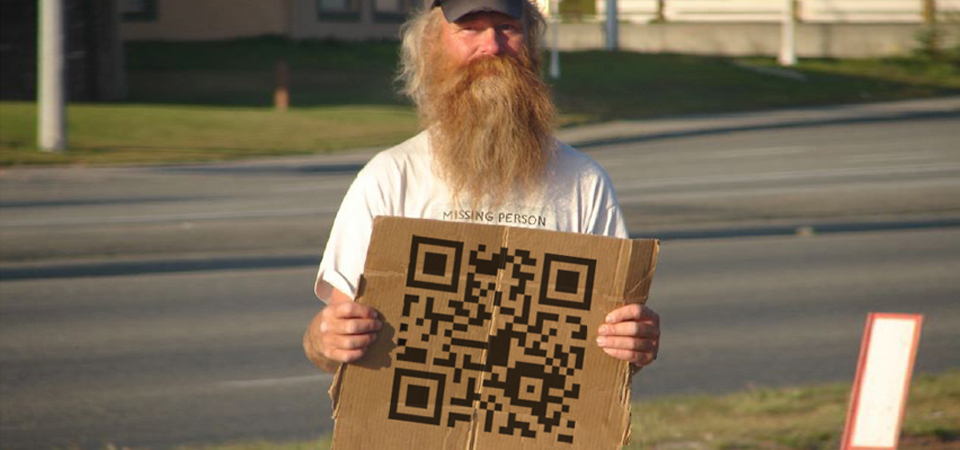
The QR Code Myth
You may not know what QR code is, but you have probably seen a black and white square on a poster or in a magazine. What is their purpose? QR codes are an improved version of barcodes. These inelegant pictograms are a way to “write down” Internet addresses. Target the QR code with your smartphone and you’ll be directly taken to the specific webpage. Since 2009, QR codes have multiplied and are easy to produce. This means that they have appeared on numerous advertising campaigns. But do these black and white squares really serve a purpose? Advertising professionals do not speak about the number of hits generated by QR codes, of course. This number is quasi insignificant, for many reasons:
Bad placement
QR codes are often placed on posters next to the Facebook and Twitter logos. The goal is to appeal to young, cool and connected people. However, most advertising posters are placed on busy roads or transit areas. Practically speaking, could you imagine seeing an interesting poster, stopping and getting out of the car, taking your smartphone to photograph the QR code and to land on the product webpage? Not in a million years. The most absurd placement of a QR code was in a television ad…
Application problems
There are two types of QR codes, each with different applications. But a QR code requires a smartphone, which is more expensive than a regular cell phone and thus less common among young people. A QR code also requires a data plan.
Why not an URL?
Let’s think for a minute: what is a QR code in the end? It’s an Internet link. Why not write a simple Internet link that the user will read and remember without an application? What is the point of a QR code in this case? According to its proponents, an Internet link is often too complex to be remembered. But isn’t it the job of the advertising expert to create efficient messages that can easily be remembered?
To my knowledge, the only successful advertising campaign was created by a lingerie store that promised pictures of topless models through the QR code. It remains to be seen whether the success was due to the black and white square and if the target market was correct…
Abstraction and Asia
In Asia, QR codes are successful particularly on the Japanese market. Many thought that it would not take long for the Japanese trend to conquer Europe. However, success is not always transferable: Japanese people are not always comfortable with Western alphabets. When typing an URL, they have to see the letters. A QR code replaces the picture and streamlines the process.
At the end of the day, an URL is an understandable abstraction for a server’s address. For example, is only an easier way of transmitting an address, rather than